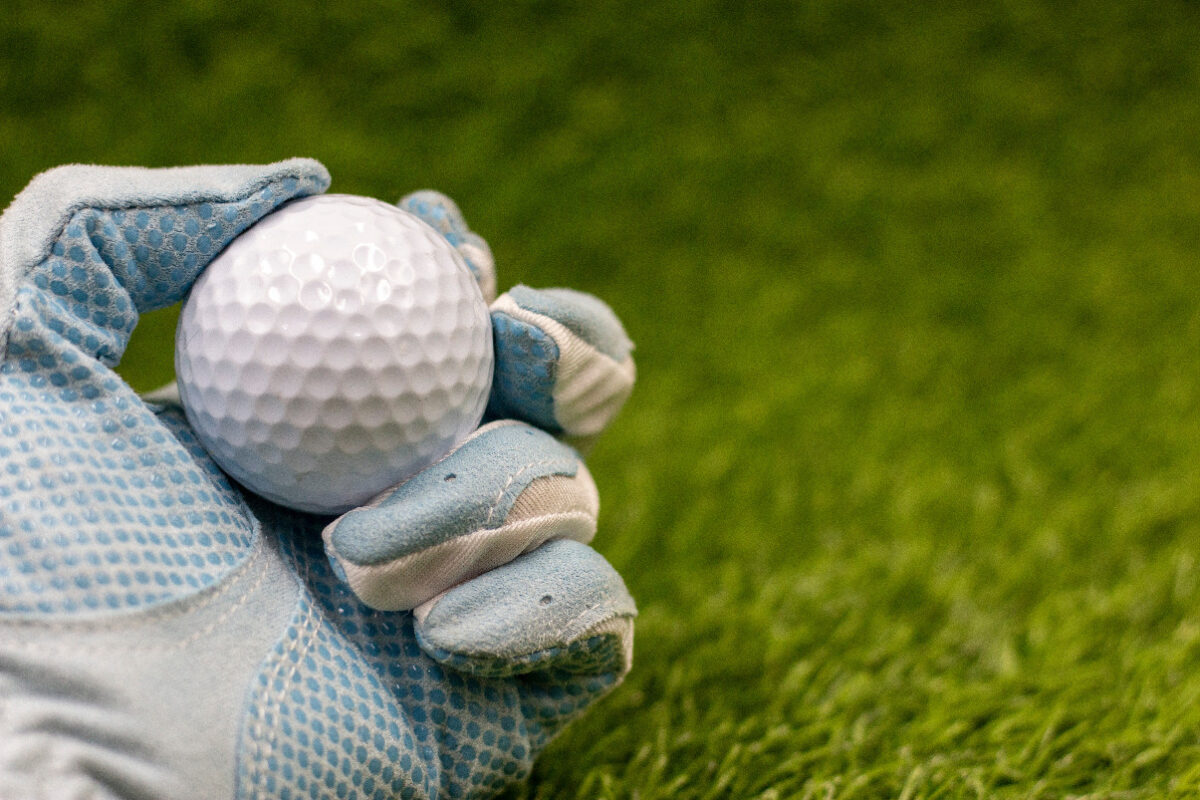Why Are Golf Balls White? The 5 Reasons
The iconic solid white golf ball has been the universal standard and norm for many decades. But white was not always the dominant color for golf balls.
In fact, early golf ball designs came in a wide variety of colors and patterns before white emerged as the ideal shade for optimizing visibility and playability.
The evolution of golf ball covers and manufacturing ultimately led to white becoming the standard color we still see today.

Early Golf Ball Designs and Experiments
Golf ball technology and preferred materials went through many phases of experimentation over the centuries since the origins of the game.
The very first golf balls used in the early 15th century were rudimentary wooden carvings made from hardwoods like beech or boxroot.
In the 1600s, leather balls stuffed tightly with feathers started gaining popularity and allowing more distance. These featheries were coated with white paint occasionally but usually left with brown leather hides.
By the mid-1800s, a new gutta-percha ball invented in Scotland became the standard. Gutta balls had a pure white outer covering, albeit lacking the durability and brightness of modern balls.
In the early 1900s, the revolutionary Haskell rubber-cored wound golf ball set the template for future designs, with a textured or mesh white cover offering improved whiteness and aerodynamics.
White Covers Provided Optimal Visibility Against Varied Backgrounds
As golf ball technology shifted from leather and gutta-percha to more modern layered rubber designs, white outer covers helped the ball become much more visible in play to golfers.
The bright white against grass, dirt, trees, bushes, clouds, and blue sky allowed the spheres to stand out more compared to traditional brown leather balls.
The boosted visibility and tracking of white balls in flight proved highly useful for following the path and finding wayward shots. Brighter and more durable white finishes enabled even better visibility.

White Covers Made Blemishes and Imperfections More Noticeable
Beyond simply improving optics, white covers on golf balls also provided the benefit of easily showing dirt, scuffs, stains, cuts, and other blemishes that could impact aerodynamics and flight.
During an era when ball quality and consistency varied widely, being able to quickly glance at a white ball and see if it was unfit or damaged helped ensure optimum play.
Dark hide covers tended to conceal imperfections, while white finishes put every flaw on display.
White Golf Balls Became the Preferred Norm Over Time
By the 1920s, the majority of golfers came to prefer the white golf ball for both enhanced visibility as well as visual quality control.
Leading ball manufacturers gravitated towards mass-producing a single white color model to reduce manufacturing costs and variability.
Standardizing on white covers meant less complexity in dying, painting, and coating. White became a tradition.
Experiments With Alternate Golf Ball Colors Failed to Displace White
There were some experiments with golf balls in colors other than white over the decades, like yellow, orange, pink, and multi-colored versions.
But none of these managed to significantly challenge the dominance of white golf balls. The occasional novelty-colored designs appealed mostly to beginners.
Later, custom logo imprinting and numbering did allow for some personalization while retaining white bases. Overall, white remained clearly preferred by golf traditionalists.
White Golf Balls Became Required by The Rules of Golf in The Late 1930s
In 1939, white golf balls became formally required under the strict Rules of Golf code of conduct enforced by the USGA and R&A.
Before then, some players had begun marking their golf balls with identifiable dots and lines to make their shots easier to spot.
Requiring only plain white spheres ensured no players could gain an advantage by personalizing their balls. This cemented white as the mandatory competitive standard.

White Balls Provide Maximum Visibility and Contrast on Putting Greens
On putting greens, white golf ball covers are highly visible against the short-trimmed grass.
Any darker or muddy balls would become lost visually at one’s feet. The bright white against green allows for easy alignment and aiming which is essential for precision putting and close approach shots.
Dark covers faded away as white balls maximized visibility on greens.
Improved White Finishes With Paints, Coatings, and Dimple Innovations
Thanks to material science breakthroughs, today’s white golf ball finishes are brighter, whiter, and more durable than ever before.
Modern titanium dioxide and zinc oxide white paints and coats like urethane prevent yellowing and scuffing.
Innovative dimple patterns also bolster aerodynamics. Vivid white matte, glossy, and pearlescent hues optimize visibility.
So white emerged and remains the golf ball color of choice for visibility against varied backgrounds, quality control checks, tradition, rules compliance, and optimizing contrast on putting greens.
Sometimes the simplest solution endures through centuries of innovation. The future of the golf ball undoubtedly remains bright white.
